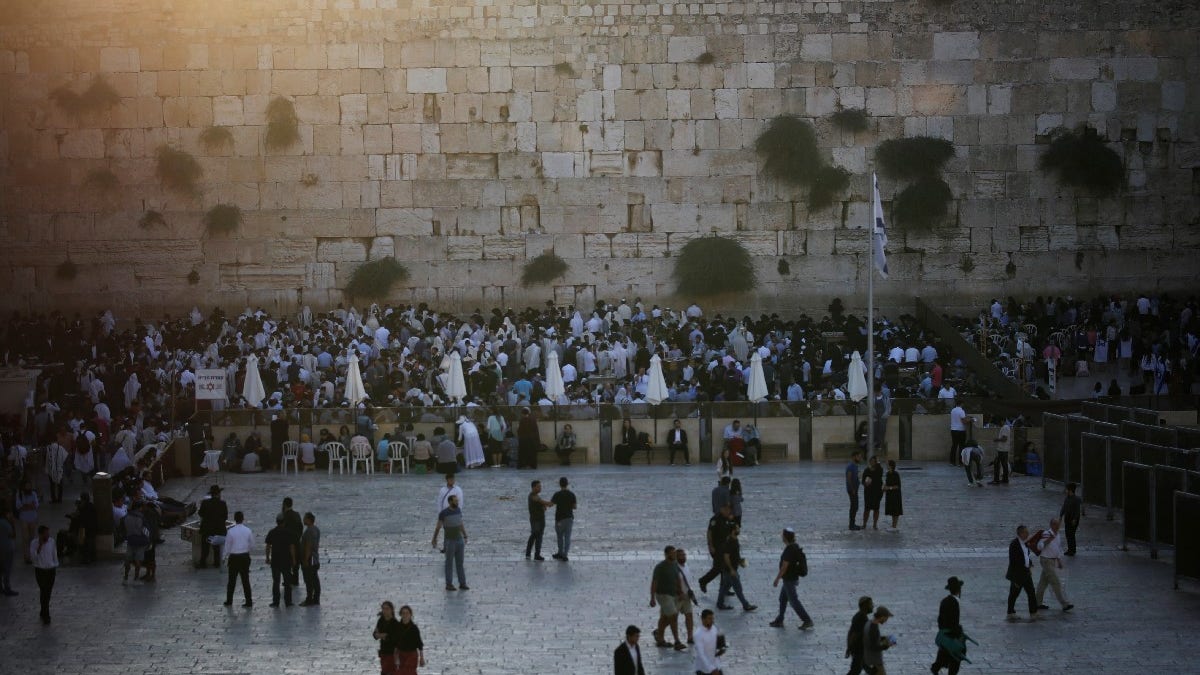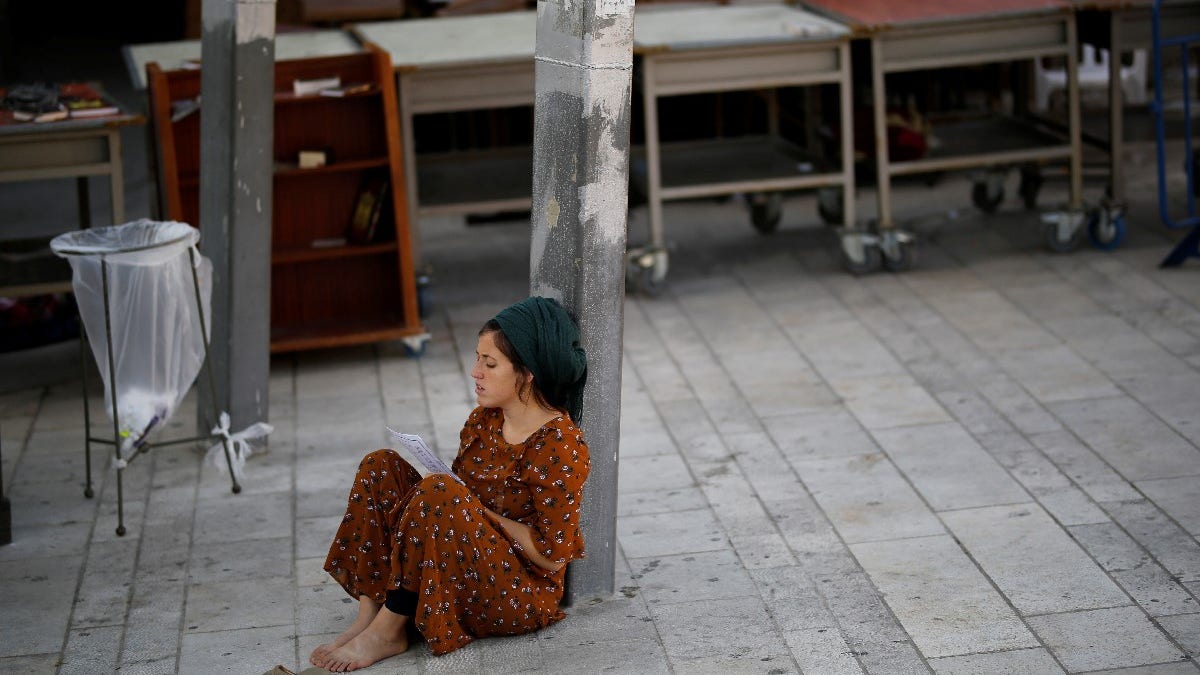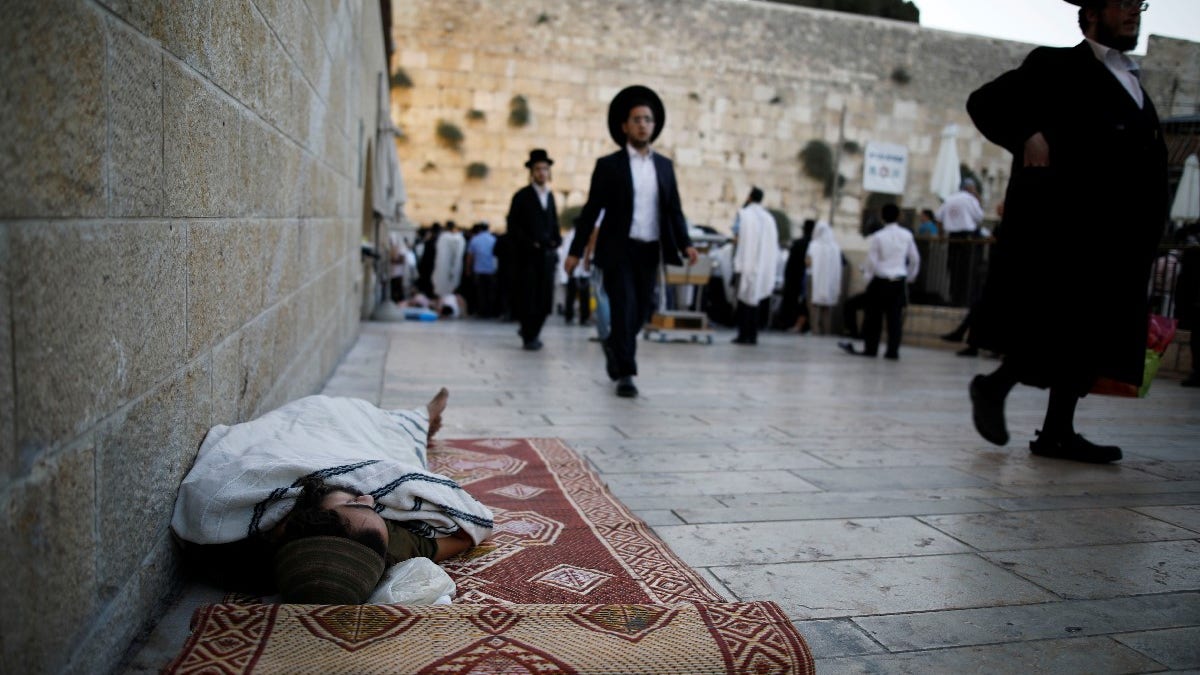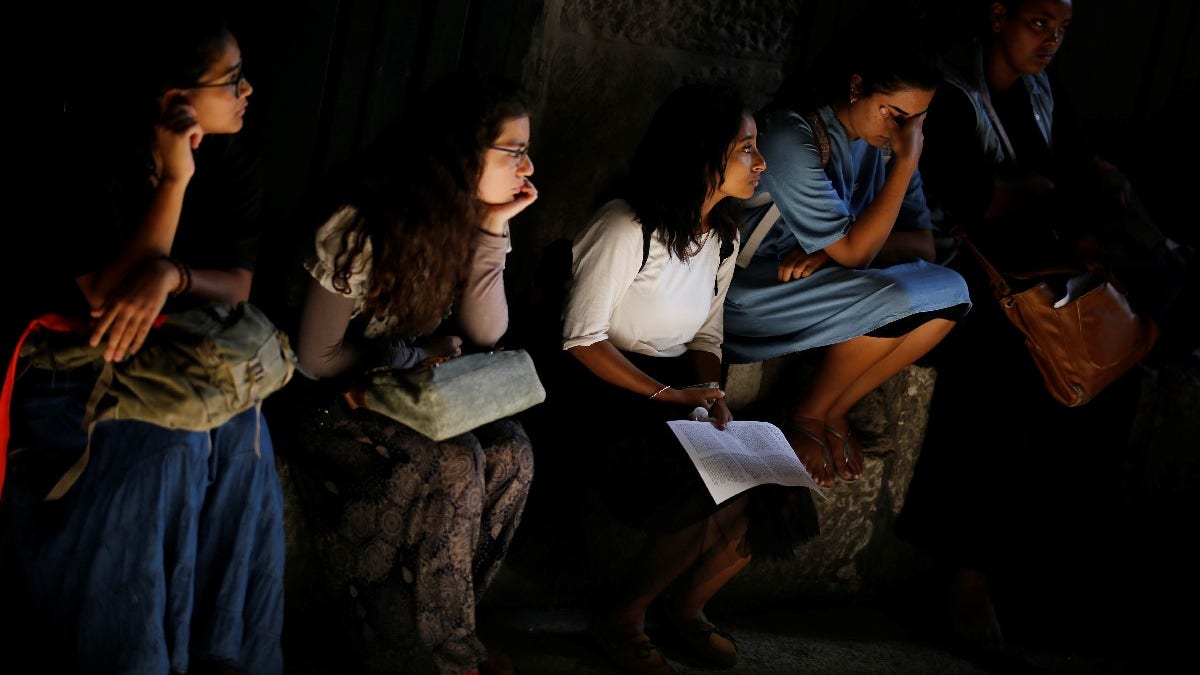
Jewish worshipers pray in front of the Western Wall on Tisha B'Av, a day of fasting and lament, in Jerusalem's Old City August 1, 2017. (REUTERS/Amir Cohen)
Tisha B’Av – Judaism’s holy day of mourning for the ancient destruction of the First and Second Jewish Temples in Jerusalem – was last Tuesday, and had special relevance for today’s conflict between Israelis and Palestinians.
Both Jewish temples – located on what is now known as the Temple Mount – were destroyed; the first by the Babylonians in 586 B.C. and the second by the Romans in the year 70. The Western Wall, erected as part of the expansion of the Second Temple, still stands and is the holiest site in Judaism.

Violence in recent days around the Temple Mount reminds us that this continues to be a hotly contested location. On July 14, three Muslims on the Temple Mount shot and killed two Israeli policemen. The gunmen were themselves then shot and killed.
Angry that they, like everyone else, had to pass through metal detectors (since removed) to enter the Temple Mount, other Muslims murdered a Jewish family eating the Sabbath supper and attacked the Israeli embassy in Jordan.
Underlying the anger that led to the murders is the irrational belief held by many Muslims that there never really were Jewish temples on the Temple Mount – and that therefore, Jews should have no access to the holy site and should not restrict Muslim access to it, regardless of security concerns

The archaeological and literary evidence for the existence of the two temples on the Temple Mount is simply overwhelming – and a lot of it continues to be unearthed. Ancient Greeks and Romans refer to one or both of the temples. And of course, there are countless references to the two temples in ancient Jewish and Christian writings.
We ourselves have visited several of the excavation sites around the Jewish temples in Jerusalem and have viewed most of the relevant artifacts on display in the Israel Museum and other museums around the world. There is no doubt whatsoever that two Jewish temples in succession stood atop the Temple Mount.
In fact, the denial of the existence of Jewish temples on the Temple Mount is what today could be called “fake news.” Two Muslim holy sites – the Dome of the Rock shrine and the Al-Aqsa mosque – are now on the site where the temples once stood. But the temples were there first.
At the Camp David Summit in 2000, Palestine Liberation Organization leader Yasser Arafat made the absurd assertion that that the Jewish temples had existed in the nearby city of Nablus, not in Jerusalem.

And in 2015, Muhammad Ahmad Hussein, the Grand Mufti of Jerusalem, claimed that a Jewish temple never existed on the Temple Mount. He said an Islamic mosque stood on the Temple Mount “since the world was created,” adding that there was “never anything other than a mosque.” A number of anti-Semitic and anti-Israel media outlets continue to voice this nonsense.
The blatant lies denying the existence of the First and Second Temples in Jerusalem are plainly designed to delegitimize the deep historical claim the Jewish people have to their holiest city.
Such lies are part of a larger denial of the very history of the Jewish people. Everything we know of ancient Israel, whether from ancient written sources or from archaeology, is cast aside. Israel’s ancient story is turned inside out and upside down. This includes what Muhammad said and what is written in the Koran. The older stories and the confirmation of archaeology count for nothing.

Saying that the Jewish temples were not in Jerusalem makes as much as much sense as saying the capital of the Roman Empire was in Australia or the Egyptian pyramids were built in Cleveland.
It is bad enough that such inflammatory deceit continues to be voiced in the Islamic media, but when something like it finds its way into a major Western newspaper there is simply no excuse.
An article published by the New York Times on Oct, 8, 2015 claimed that it has not been definitely proven that the Jewish temples were located on the Temple Mount. The article was headlined: “Historical Certainty Proves Elusive at Jerusalem’s Holiest Place.”

This is what makes the quest for peace in the Middle East so elusive.
Israel and its Arab neighbors do need to sit down and find a solution – a solution that will work for them and for the Palestinians.
The Palestinians have rights. But negotiations will get nowhere when one side refuses to recognize the history of the other side and so continues to argue that Israel has no right to exist and no valid claim to the land.
The stories of the Bible might be old and strangely quaint to many, but these stories provide us with Israel’s history and go a great way to legitimating the Jewish people’s claim to the land.




















